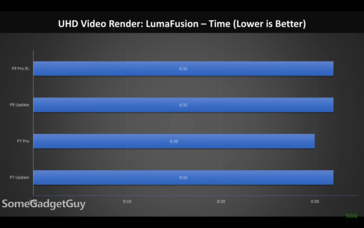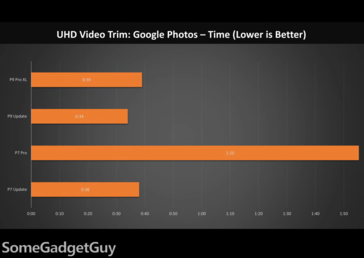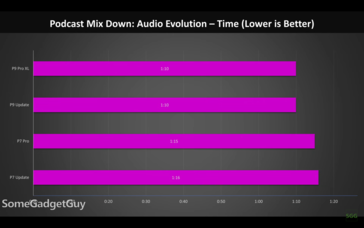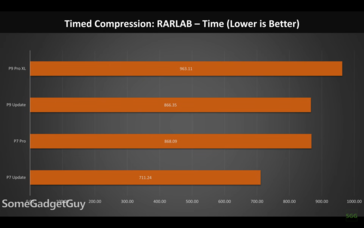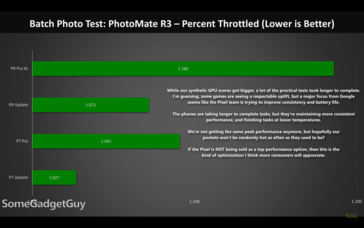We noted in our review of the Pixel 9 Pro XL that the Tensor G4, the SoC powering the Pixel 9 series, is slower than the competition. It can’t hang with the likes of the Snapdragon 8 Gen 3 and the Apple A18 Pro. Making matters worse, the smartphone also throttles under load, which further decreases the performance.
Google has delivered a new update for the Pixel devices that seemingly makes the phone faster. The update reportedly improves performance in synthetic benchmarks like Geekbench. But how about real-world scenarios like photo editing?
Seasoned smartphone reviewer Juan Bagnell has tested the Pixel 9 Pro XL and the Pixel 7 Pro in a variety of tests to see the effects of the performance-enhancing update. Unfortunately, the overall impact of the update is hit-or-miss.
Impact of the latest Google Pixel update on real-world performance
Starting with Wilderless, a demanding mobile title, graphics performance remains unchanged. The Pixel smartphone in question apparently runs the game in the 40 FPS range with settings pushed to max. As a comparison, the Xiaomi 15 Ultra reportedly plays Wilderless “at more than double the resolution” at a better, more stable frame rate. So, there is a significant performance gap between the Tensor G4 and the Snapdragon 8 Elite.
Moving on to video editing apps, the Pixel 9 Pro XL performs the same in LumaFusion before and after installing the update. The device completes the rendering of a 1-minute-long UHD video in about 32 seconds. Interestingly, the updated Pixel 7 Pro shows a performance regression in this test, as it falls behind the non-updated Pixel 7 Pro by a 7% margin.
On the other hand, the Pixel 9 Pro XL and the Pixel 7 Pro enjoy a solid improvement in video editing performance in Google Photos with the latest update installed. It takes the Pixel 9 Pro XL 34 seconds to trim a 3-minute video down to 2 minutes and save the file, an 11% improvement. The Pixel 7 Pro does the job in 38 seconds.
In the audio mixing test, the performance of both Pixel devices remains practically unchanged. This is in contrast to the file compression benchmark, where the update makes the Pixel 9 Pro XL around 11% faster than the non-updated version. The real kicker here, however, is the performance of the Pixel 7 Pro before and after the update.
In the RARLAB file compression test, the non-updated Pixel 7 Pro is practically on par with the updated Pixel 9 Pro XL. The Pixel 7 Pro’s performance improved by quite a wide margin after the update, as it is 17% faster than even the Pixel 9 Pro XL with the update. The lack of any performance gain for the Tensor G4 over the Tensor G2 of the Pixel 7 Pro is also evident in a “Synthetic Compression” test where the two SoCs are neck and neck.
Google Pixel update reduces throttling
Taking a closer look at the results, it is quite clear that the performance gains are not universal. Where some apps do see some speedups, real-world tasks like video editing deliver iffy results. However, this Pixel update could reduce throttling, providing more stable performance and, theoretically, more battery life.
Per a batch photo test conducted by Juan Bagnell in PhotoMate R3, the Pixel 9 Pro XL only throttles by 7% after the update, whereas it throttled by a massive 19% before. The Pixel 7 Pro shows a similar result, with the smartphone only throttling 3% vs 9% without the update.
In other words, Google looks to have decided against pushing peak performance in favor of a more consistent approach for maximizing efficiency and minimizing throttling.
Buy the Google Pixel 9 Pro XL | Pixel 7 Pro on Amazon
Source(s)
Juan Bagnell on YouTube, Teaser image: Google, Pawel Czerwinski on Unsplash, edited





